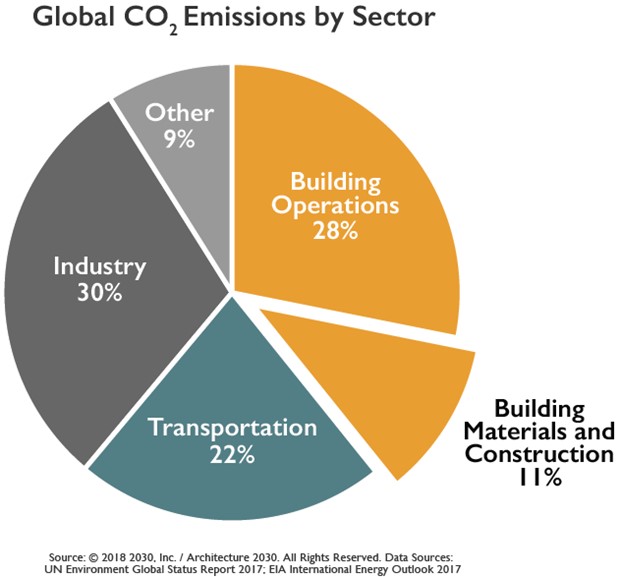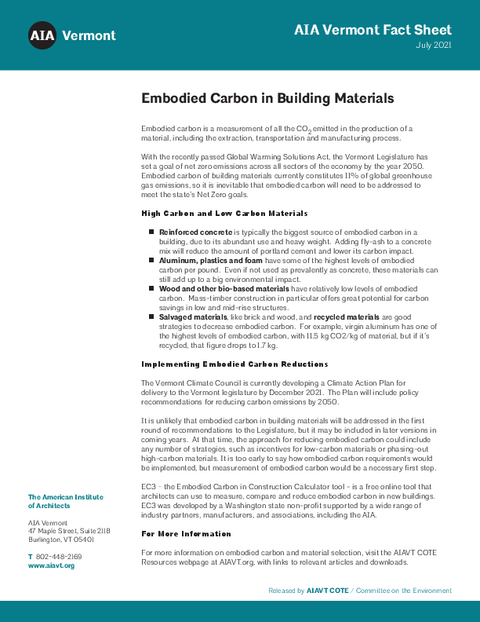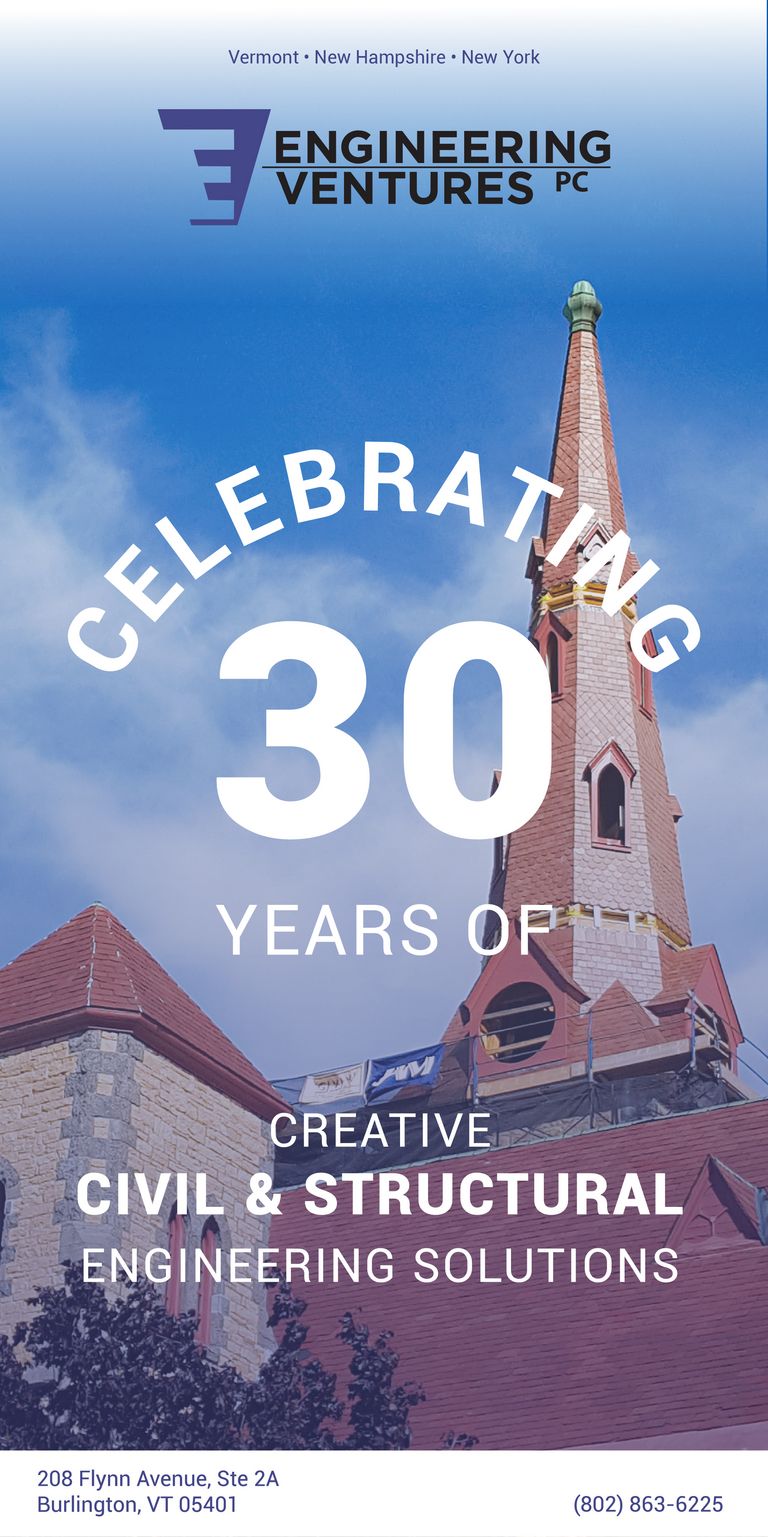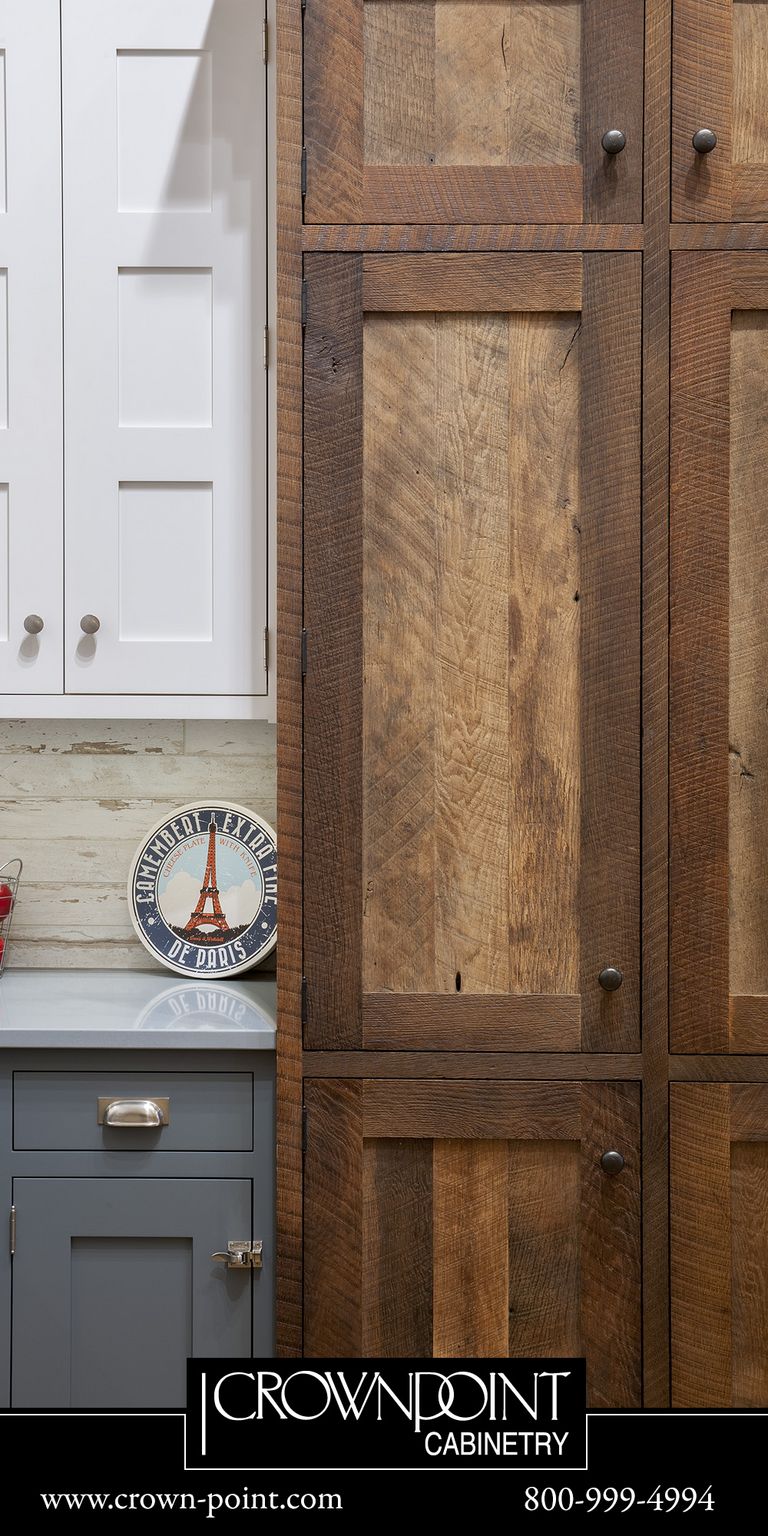Embodied Carbon in Building Materials: the Next Challenge for Vermont’s Net Zero Goals?
by Matt Bushey, AIA and Members of the AIAVT COTE Committee
Many of us have dealt with clean-energy skeptics over the years. Folks who dismiss solar panels because they claim more energy is used to produce the panels than they save. Or that the manufacture of electric cars produces more emissions than a conventional vehicle. While these false claims have been thoroughly debunked, the argument is based on a kernel of truth: that products and materials do use energy to manufacture. The whole process of raw material extraction, manufacturing, and transportation can use a large amount of energy and produce significant greenhouse gas emissions before a product is even used for the first time. This is what’s known as embodied carbon.
If you have attended the AIA national convention or Efficiency Vermont’s Better Buildings by Design conference in recent years, you may have noticed that embodied carbon is getting more attention these days. We, as an industry, have gotten very good at producing buildings that use less energy to operate. But the embodied energy of building materials has remained an elusive and persistent source of greenhouse gas emissions in a building. Embodied carbon of building materials constitutes 11% of global greenhouse gas emissions, a significant amount that can not be overlooked any longer.
Nationally, the Biden administration has pledged to cut greenhouse gas emissions in half by 2030. Here in Vermont, the Legislature has set a goal of net zero emissions across all sectors of the economy by the year 2050, with the recently passed Vermont Global Warming Solutions Act. To achieve these goals, it is going to be necessary to look at embodied carbon and transition to low-carbon materials.
HIGH CARBON AND LOW CARBON MATERIALS
Due to its abundant use and heavy weight, reinforced concrete is typically the biggest source of embodied carbon in a building. The manufacturing process for Portland Cement is energy-intensive, and when added to the embodied energy associated with processing sand, stone, and iron rebar, the end product is a major contributor to a building’s carbon footprint. Adding fly ash to a concrete mix is one of the most popular ways to reduce its embodied carbon in our area. At Harrison Concrete, fly ash is available for up to 35% in a concrete mix, and is currently being used on all State of Vermont projects.
Aluminum, plastics and foam have some of the highest levels of embodied carbon per pound. Even if not used as prevalently as concrete, these materials can still add up to a big environmental impact.
On the other end of the spectrum, wood and other bio-based materials have relatively low levels of embodied carbon. Here in Vermont, we are fortunate to have a strong wood products industry that follows sustainable forestry practices. Mass-timber construction in particular offers great potential for carbon savings in low and mid-rise structures and is expected to break into the local market in the near future.
Manufacturers are also coming out with low-carbon versions of products already on the market, such as bio-based MDF panels and reformulated gypsum wallboard that uses less water – and thus less energy – in its manufacture.
Using salvaged materials, like brick and wood, and recycled materials is also a good strategy to decrease embodied carbon. For example, virgin aluminum has one of the highest levels of embodied carbon, with 11.5 kg CO2/kg of material, but if it’s recycled, that figure drops to 1.7 kg.
IMPLEMENTING EMBODIED CARBON REDUCTIONS
As established by the Vermont Global Warming Solutions Act, The Vermont Climate Council is currently working toward the development of a Climate Action Plan, which is expected to be delivered to the Vermont legislature by December 2021. The Plan will include policy recommendations for reducing carbon emissions by 2050.
AIAVT has been attending the meetings of the Vermont Climate Council over the past 6 months. At this time, it is unlikely that embodied carbon in building materials will be addressed in the first round of recommendations to the Legislature, but it may be included in later versions in the coming years. At that time, the approach for reducing embodied carbon may be similar to the approach taken toward the reduction of operational energy in buildings.
Reducing operational energy use in a building has been achieved through a combination of “carrots” (such as incentives for energy efficiency measures by organizations like Efficiency Vermont), and “sticks” (such as building envelope standards established by the Vermont Energy code).
It is possible that a similar combination of carrots and sticks could be used to address embodied energy as well. Incentives could be offered for low-carbon materials, such as wood and concrete additives. On the legislative side, it is too early to say how embodied carbon limits would be implemented. This could conceivably include the phase-out of products with high embodied carbon, or the establishment of maximum levels of embodied energy for a building. For this, measurement of embodied carbon would be a necessary first step. You can’t manage what you can’t measure.
Fortunately, there is a tool that does just that. EC3 – the Embodied Carbon in Construction Calculator tool - is a free online tool that architects can use to measure, compare and reduce embodied carbon in new buildings. EC3 was developed by a Washington state non-profit supported by a wide range of industry partners, manufacturers, and associations, including the AIA.
For many of us, the concept of embodied carbon in building materials may be a new one. As architects, we are well versed in the concepts of thermal performance and we can even calculate how much operational energy a new building will use. But embodied energy remains more of a mystery.
With the right tools, incentives, and education, that can change. And Vermont architects can be leaders in the adoption of low-carbon building materials and their role in meeting the state’s goals for net-zero greenhouse gas emissions.
For more information on embodied carbon and material selection, visit the AIAVT COTE Resources webpage, with links to relevant articles and downloads, including:
- The Prescription for Healthier Building Materials: A Design and Implementation Protocol, a downloadable guide by AIA and ARUP, and
- The AIA Blueprint for Better article Design Tools to Help Stop Climate Change
- The AIAVT COTE Fact Sheet on Embodied Carbon in Building Materials:






